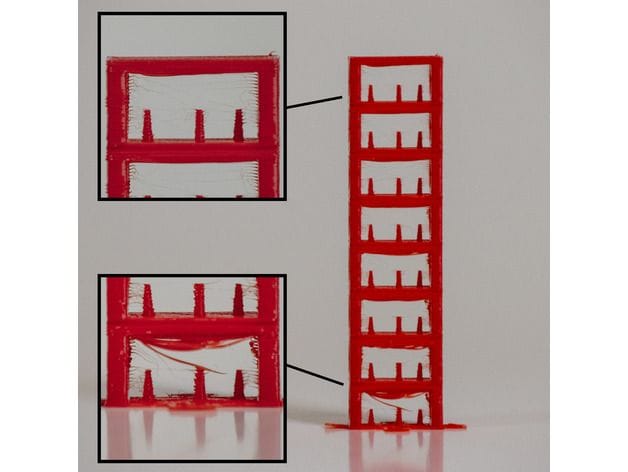
This week’s selection is the very useful Temperature Tower by Simplify3D.
Simplify3D is the well known software producer of the eponymous 3D print slicing and management system very often chosen as a third party addition to your 3D printing operation. While it is not freely available like open source options, it’s USD$149 price is very often justified in the tremendous 3D printing results generated.
But in addition to their software package, Simplify3D also provides some 3D models occasionally, and one of them is this highly useful “Temperature Tower”.
What the heck is a Temperature Tower and why would you want one?
This model is used to refine your print temperature to the optimum level for a given spool of thermoplastic filament.
While some 3D printer manufacturers control the filament chemistry and provide highly tuned print profiles optimized for that material, many other 3D printers do not. There is a huge variety of third party providers of filament all of whom market ion total perhaps hundreds of filament types.
Each of these are slightly different chemically, and thus have slightly different reactions to heat. Even worse, every 3D printer using filament is built slightly differently, making the machine’s reaction to a given filament unpredictable.
This means that in practice you should never “just print something” with a new spool of filament because the print profile will no doubt be slightly off. Instead you should perform some tests to find the sweet spot for that filament on your specific machine. It will be somewhere between “too cold to stick layers together properly” and “slump city”.
Usually this is done by tediously printing a test object over and over, each with a slightly different temperature. It’s an iterative process where you will gradually get close, overshoot, undershoot and eventually land on the right temperature.
But why perform all those tedious tests when you could do them all in a single print? That’s what the Temperature Tower does: it includes a repeated vertical pattern, where each section can be 3D printed in a different temperature.
I must point out that not every 3D print slicing system allows you to vary the temperature by Z-height. It turns out that Simplify3D does, of course. You can even store the GCODE generated and reuse it on each new filament of the same material type – because you don’t know what the correct temperature will be until you print the tower anyway.
Because the vertical patterns are identical, you can compare each one’s results to another and very quickly identify the optimal temperature.
The sections include features that test fine details, stringing, overhangs and bridging, each the most troublesome structures to 3D print and the ones most affected by mis-temperatures.
Simplify3D has uploaded this design to Thingiverse where you can freely download it and begin thermal testing.
Via Thingiverse

